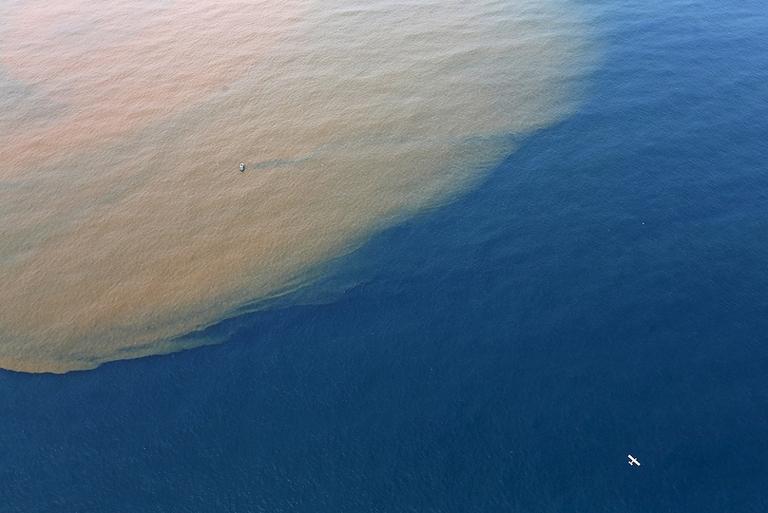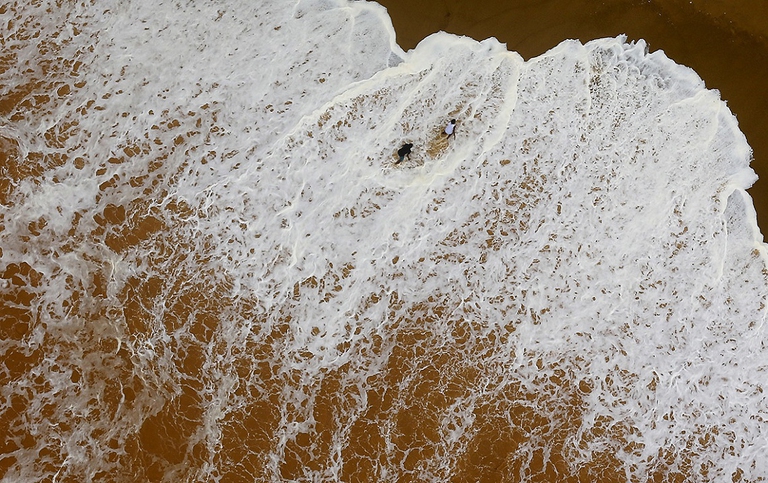
A group of experts in Tokyo suggested pouring radioactive water from Fukushima into the open sea. A marine biochemist explains the consequences of this absurd decision.
In seguito al cedimento di due dighe, nel sud est del Brasile, i liquami velenosi sono arrivati nell’Oceano Atlantico e potrebbero impiegare 100 anni prima di essere riassorbiti completamente.
“Brazilian Fukushima”. This is how the tragedy that hit Brazil on 5 November due to the collapse of two dams has been called. The name gives an idea of the seriousness of the social and environmental disaster, even if its extent still remains unclear.
The collapse of the dams owned by the mining company Samarco, which were built to contain wastewater, has caused 11 deaths and left 12 missing. It is the worst environmental disaster in Brazil’s history, and one of the most dangerous in the world.
The mudslide that covered the village of Bento Rodrigues contained highly toxic substances, such as mercury, arsenic, lead, and other heavy metals. As biologists had feared, the poisonous mudslide made of 62 million cubic metres of toxic sludge, has devastated the Rio Doce basin in Minas Gerais, and is going to poison the sea of Espirito Santo.
According to Marcos Freitas, Executive Coordinator of the Instituto Virtual Internacional de Mudanças Globais (IVIG), the tragedy has been caused by Samarco’s negligence. The company is guilty of severe neglectfulness in terms of maintenance and security, and provoked a disaster that is the worst ever caused by a mining company. The amount of toxic mud released is 2.5 times higher than the second worst incident that took place in the Canadian mine of Mount Polley, British Columbia, on 4 August 2014.
Despite the prompt alert, nothing was done to avoid the toxic mudslide to reach the Brazilian coasts of the Atlantic Ocean, one of Brazil’s regions most rich in biodiversity. “Toxic mud into the ocean could have an environmental impact equal to the contamination of a rainforest the size of the Brazilian Pantanal,” said biologist André Ruschi, Head of the Estação Biologia Marinha Augusto Ruschi di Aracruz, Santa Cruz, Espírito Santo.
Ruschi points out that the environmental damages caused by such mud tsunami could take at least 100 years to be completely reabsorbed. “It is a massive disaster with consequences difficult to be assumed”.
Among the victims of the disaster, the Krenak Indians are the most affected, an indigenous community living along the shores of the contaminated river, which now have to rely on drinking water and food deliveries. “The river was everything for us, not just water, and fish, but a source of survival and culture,” said chief Leomir Cecilio de Souza. “Since the time of our ancestors, the river maintained our people. It was sacred. But now it is dead”.
The deadly tide, sliding towards the ocean, has left a trail of dead animals, uprooted trees, and a thick layer of solidified mud. So far, Brazil’s government has fined Samarco (owned by mining giants Vale and BHP Billiton) twice: $60 million and $250 million. However, experts estimate that the damages to ecosystem and biodiversity worth many billion dollars.
Furthermore, the company, which had more than once denied the mud toxicity, hasn’t still provide a complete list of the substances contained in the mud spilled from the dams. Many now fear that another 200 dams in the country could be at risk.
Humanitarian and environmental associations request a tightening up of regulations and denounce the close link between politicians and mining companies, which have spent over 7 million dollars in political and advertising campaigns last year.
Siamo anche su WhatsApp. Segui il canale ufficiale LifeGate per restare aggiornata, aggiornato sulle ultime notizie e sulle nostre attività.
![]()
Quest'opera è distribuita con Licenza Creative Commons Attribuzione - Non commerciale - Non opere derivate 4.0 Internazionale.
A group of experts in Tokyo suggested pouring radioactive water from Fukushima into the open sea. A marine biochemist explains the consequences of this absurd decision.
The decline in grey and humpback whales in the Pacific and Atlantic Oceans has been traced to food shortages caused by rising ocean temperatures.
The United Nations has launched a major international alliance for ocean science, undertaking a mission close to all our hearts.
The cargo ship that ran aground off the coast of Mauritius on 25 July, causing incalculable damage, has split in two and its captain has been arrested.
The largest coral reef in the world is severely threatened by climate change, but researchers are developing strategies that could contribute to saving the Great Barrier Reef.
Seychelles have extended its marine protected area, which now covers over 400,000 square kilometres, an area larger than Germany.
Norwegian oil giant Equinor had pulled out of drilling for oil in the Great Australian Bight, one of the country’s most uncontaminated areas. A victory for activists and surfers who are now campaigning for the area to be protected forever.
30 per cent of the planet needs to be protected to stop precipitous species decline. The UN has set out its aims for the the COP15 on biodiversity scheduled for Kunming, China in October.
Ocean warming has risen to record highs over the last five years: just in 2019 the heat released into the world’s oceans was equivalent to that of 5-6 atomic bombs per second. The culprit, no doubt, is climate change.









